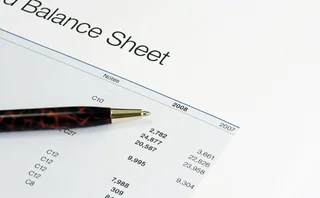
CBOE Direct launched after several delays
The Chicago Board Options Exchange (CBOE) has launched CBOE Direct, a screen-based trading platform for members trading selected products before the open-outcry trading floor starts for the day.
CBOE Direct runs from 7am to 8.15am - before the beginning of regular trading, which is 8.30am Chicago time.The exchange had planned to launch the system on June 1, but postponed the start date to allow technology staff to spend more time connecting brokers. The September 11 attacks pushed the date further back to the end of October, O’Connell said, adding, "We’re not too far off from where we expected to be."
In the first week, trade volume on the CBOE Direct system tripled from 20 to 60 trades, with five liquidity providers signed on through the proprietary CBOE Market Interface API (application provider interface), dubbed CMI. The CBOE infrastructure also supports the older Compass system, which routes orders only. A number of firms have begun routing orders using FIX 4.2 over connections installed by Javelin Technologies, but "at a slower rate than they are connecting through CMI", O’Connell claimed. "Brokers aren’t moving to FIX as rapidly as we’d expected."
CBOE Direct will compete with a flurry of electronic platform launches, many of which operate with full regulatory approval. The Pacific Exchange merged with Archipelago and used its technology to migrate its floor-based equities trading onto an electronic platform last month in a venture called the Archipelago Exchange. Meanwhile, Brokertec Futures Exchange has gained regulatory approval from the Commodities Futures Trading Commission and plans to launch by November 30.
CBOE Direct is capable of trading in tandem with the exchange’s 1,402 floor traders, but the exchange’s board has been reluctant to approve that level of operation, or anything that might be perceived as cannibalisation of the volume handled by the floor, O’Connell said.
Even though the International Securities Exchange, the all-electronic options exchange, inched up to third place in share volume last month, O’Connell is not intimidated. "We’re not worried about the technology," he said. "We have a membership structure that isn’t ready to migrate [to full electronic trading]. We have a technical edge over ISE, and it’s only for political, not technical reasons, that we are not competing directly with them."
Analysts said the digitisation of exchanges is inevitable and that the electronic ventures of some of the more traditional exchanges are half-hearted.
"I think CBOE Direct is sort of a reaction to what’s going on outside their floor, which is electronic matching everywhere else," said Sang Lee, an analyst at Celent Communications. "I don’t think they’ve worked very hard marketing [CBOE Direct] to the members."
Lee points out that the Chicago derivatives exchanges with electronic matching platforms - the Chicago Mercantile Exchange with Eurex’s Globex and the Chicago Board of Trade with a/c/e - have a history of gradually ratcheting up the operating hours of their platforms to avoid unduly upsetting their floor traders.
"That’s the traditional way of going about these things: open up for a couple of hours, then a few more, and then you get critical mass," Lee said. "It’s like detox." But if a fledgling matching system should experience a large technical failure before it achieves that critical mass, it may never regain member confidence, Lee added.
There are no plans to 'commercialise' CBOE Direct in the way the Philadelphia Exchange sold eVWAP to a vendor, or in the way OM Stockholm, Euronext or Eurex have sold their exchange technology to other exchanges, O’Connell said.
Only users who have a paid subscription or are part of a corporate subscription are able to print or copy content.
To access these options, along with all other subscription benefits, please contact info@risk.net or view our subscription options here: http://subscriptions.risk.net/subscribe
You are currently unable to print this content. Please contact info@risk.net to find out more.
You are currently unable to copy this content. Please contact info@risk.net to find out more.
Copyright Infopro Digital Limited. All rights reserved.
As outlined in our terms and conditions, https://www.infopro-digital.com/terms-and-conditions/subscriptions/ (point 2.4), printing is limited to a single copy.
If you would like to purchase additional rights please email info@risk.net
Copyright Infopro Digital Limited. All rights reserved.
You may share this content using our article tools. As outlined in our terms and conditions, https://www.infopro-digital.com/terms-and-conditions/subscriptions/ (clause 2.4), an Authorised User may only make one copy of the materials for their own personal use. You must also comply with the restrictions in clause 2.5.
If you would like to purchase additional rights please email info@risk.net
More on Exchanges
Nasdaq leads push to reform options regulatory fee
Proposed rule change would pare costs for traders, raise them for banks and defund smaller venues
Asia’s ETF assets on the rise – HKEX presents the results of Asia ETF survey 2019
Asia’s total ETF assets surged by 23.9% in the first half of 2019 thanks to an increasing adoption of ETFs into investment portfolios. According to a survey conducted by Hong Kong Exchanges and Clearing (HKEX), asset expansion in Asia’s ETF market is set…
NYSE Offers Exchange-Calculated Bitcoin Index, with More to Come
NYXBT will initially be based off data from Coinbase Exchange.
Deutsche Börse to set up Europe's first multi-asset RMB platform
German exchange group signs joint venture deal with CFFEX and Shanghai Stock Exchange
Exchange Revenue Figures Rise, Fall; Data Revenues Continue Steady Increase
A mostly positive mix of Q1 results also yield big increases in data revenues for some exchanges.
Lift-off for ASX Aussie dollar swap clearing business
Volumes jump following revamp of Sydney bourse's clearing incentive scheme
Exchange Data Revenues Make Positive Start to 2015
Acquisitions made up for some shortfalls in exchange revenues







